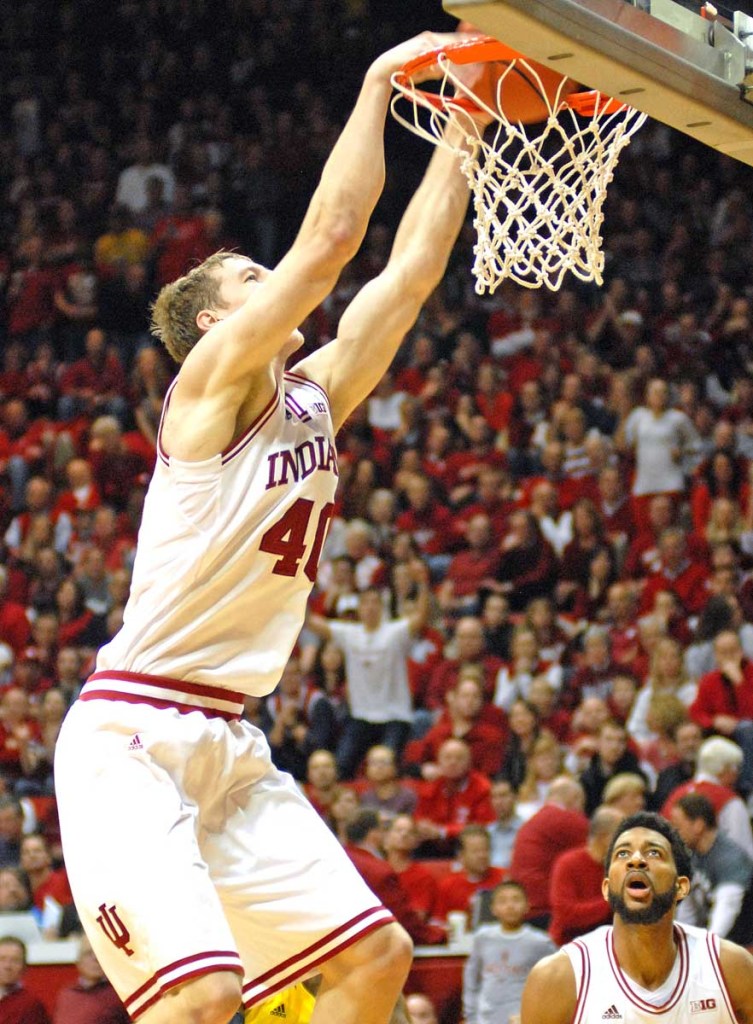Four things that need to change in the sports world in 2016
Published 11:30 am Tuesday, December 29, 2015

- Indiana's Cody Zeller dunks during a game at Assembly Hall in Bloomington, Ind., in 2014.
It was a year of extraordinary accomplishments and upsets in the sports world. Ohio State kicked off a new era in college football by winning the first College Football Playoff national championship, stunning No. 1 Alabama and No. 2 Oregon.
American Pharaoh became the first horse in 37 years to win the Triple Crown.
Trending
And Serena Williams’ seemingly certain march to tennis’ first Grand Slam since 1988 was derailed by one of the sport’s all-time biggest upsets when unseeded Roberta Vinci knocked off Williams, a 21-time major champion, in the semifinals of the U.S. Open in New York.
But what could have made things better for fans and players alike? Here are some ideas that would help put a better product on the field:
Baseball: The All-Star Game winner gets World Series home field advantage
In an ill-advised effort to avoid repeating the fiasco of the 2002 All-Star Game in Milwaukee — which ended in a 7-7 tie after 11 innings when both teams ran out of relief pitchers — baseball instituted a rule extending home field advantage in the World Series to the champion of the league winning the All-Star Game each year.
The myriad of problems with this mechanism are self-evident. Is it really fair to, say, an American League team which dominates, perhaps winning more than 100 games, to surrender home field to a National League club that goes 83-79 and squeaks into the playoffs as a wild card? Is it really fair that the difference between winning and losing a world championship could be decided by a majority of players not even on the opposing teams, in a game played months earlier?
It likely won’t happen, but here’s hoping Major League Baseball revisits this silly rule soon.
College football: Time to start paying players
With the unqualified success of the College Football Playoff, the sport has entered a new era, and nearly everyone is benefiting.
Everyone, that is, except for the players who make such largesse possible.
Each of the Football Bowl Subdivision (FBS) conferences and their member schools — as well as independents like Notre Dame — have more than doubled the annual revenue that had been received under the old Bowl Championship Series. That means the “Power Five” conferences (Big Ten, Pac-12, Big 12, SEC and ACC) are each getting at least $60 million to split among their member schools.
While these five conferences, under a new governance model, have already notified the NCAA of their intent to provide more benefits to athletes, the NCAA needs to take the lead when it comes to better compensating players who are the ultimate source of its wealth. Whether it’s providing monthly stipends, lifetime scholarship guarantees or long-term health care and insurance, the time has come for everyone — truly, everyone — to share in the wealth.
NFL: Come clean on concussions
The league’s perceived inaction on head trauma — specifically concussions, which have been shown to lead to chronic traumatic encephalopathy (CTE) — has overshadowed a variety of fascinating storylines on the field. The Christmas Day release of “Concussion” has intensified the spotlight on and raised awareness of the risk of brain injury in the sport. And the league took a public relations hit when it disputed an ESPN report that it was withholding funding of a Boston University study on the relationship between football and brain disease.
While the league can’t change the past, Commissioner Roger Goodell can and should do more to communicate the steps the NFL is taking both to make the game safer for its players and to do right by the estimated 6,000 of its 20,000 retirees who are dealing with the symptoms of CTE. An agreement to pay more than $750 million to settle a lawsuit brought by nearly 4,500 players alleging that the dangers of head trauma were covered up is a start.
“We welcome any conversation about player health and safety,” a league spokesperson wrote in an email responding to the movie. “Broader and deeper awareness of these issues will positively impact all athletes.”
College basketball: Shrink the tournament
Remember the old saying, “If it ain’t broke, don’t fix it?” It’s hard to think of anything this applies to more than the NCAA men’s basketball tournament.
March Madness is perhaps the most exciting time on the sports calendar every year, and it has been that way for 30 years, since the NCAA expanded the field to 64 teams in 1985. So why change anything?
The decision to increase the field to 68 teams, starting in 2011, has added logistical headaches for teams participating in the “First Four.” Play a game on Tuesday or Wednesday, get on a plane, then turn around and play again on Thursday or Friday.
It has created confusion as to seedings as well, seemingly randomizing the higher seeded opponents that the winner of each First Four game will play next.
The tournament was already a television and financial behemoth, generating more than $750 million in revenue and garnering huge ratings for CBS and its broadcasting partners. Is it really worth a few extra bucks to add four games?



